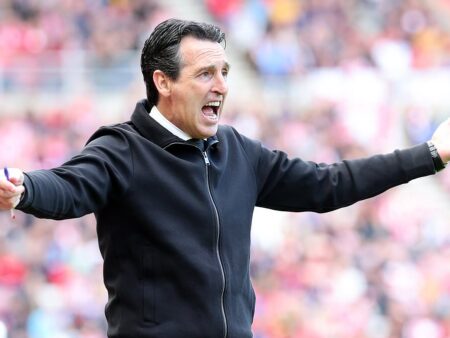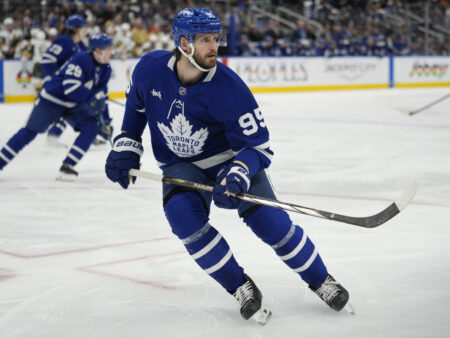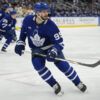
`No tournament will be perfect,` noted Jurgen Klinsmann during a review of the recent Club World Cup. This statement rings particularly true for the inaugural 32-team edition, which concluded with Chelsea`s 3-0 victory over Paris Saint-Germain at MetLife Stadium. While some initial challenges were anticipated for this large-scale, first-of-its-kind event, drawing a simple conclusion about its success in the new format remains complex.
The tournament served as a unique case study, highlighting both the tangible and intangible aspects that shape attendee and player experiences. It offered a clear picture of which of FIFA`s gambles paid off and which did not, forcing organizers to adapt to unfamiliar circumstances. Adversity is inherent in large sporting events, but the Club World Cup prompted questions about whether the issues faced were natural hurdles or problems created by the event`s design itself.
Even after the tournament`s conclusion, a degree of uncertainty lingers, raising fundamental questions about Gianni Infantino`s first major project as FIFA president and the organization`s capacity to realize its grand vision.
Evidence of On-Field Quality
FIFA promoted the expanded Club World Cup as a competition based on sporting merit, though concerns existed that European teams would predictably dominate. The final, featuring two European giants, did little to dispel these fears, especially with Paris Saint-Germain, the reigning UEFA Champions League winners, being the clear favorites. However, the tournament`s most positive aspect was the abundance of captivating moments on the field and a welcome number of unexpected results.
South American clubs proved competitive, remaining undefeated against European teams in six out of twelve matches, suggesting that the perceived gap between clubs from the two continents might not be as vast as some expected. Brazilian teams particularly impressed; all four advanced from their groups, eliminating European sides like Atletico Madrid and FC Porto. Fluminense was a notable standout, reaching the semifinals and securing a financial boost exceeding $60 million, representing over 80% of their previous year`s revenue. Each of the six South American participants arrived in the U.S. determined to make a statement, and many succeeded.
“[Brazilian teams have] done a great campaign,” stated Fluminense manager Renato Gaucho, acknowledging the financial disparity. “When I said we were an ugly duckling… I mean an ugly duckling in financial terms… Fluminense`s finances don`t make 10% of the finances of these other clubs. They are in a position to hire all these major players… your chances of winning are much higher.”
Manchester City`s early exit to Saudi Arabia`s Al-Hilal was arguably the biggest surprise. Overall, the matches displayed a level of competitiveness that made for an entertaining spectacle, proving more engaging than some of the American sports-inspired pre-match theatrics. The intensity surprised even Arsene Wenger, FIFA`s chief of global football development.
“I was highly surprised,” Wenger commented. “Everybody inside the camp was very, very highly motivated. I spoke with some teams who, when they were out, were very disappointed.”
The substantial $1 billion prize fund likely offered ample motivation, particularly for European teams who sometimes claimed fatigue. Others may have felt they had little choice but to participate, making the best of a less-than-ideal situation.
“This is like you play in a World Cup with the national team, so for me… players… enjoy to be here,” said Dortmund`s Niko Kovac. “We don`t want to talk about maybe too much minutes, too much games. This is a negative for our mindset… If you come and you think in that way, I think you can`t be successful, so I think you must take it serious and positive… My players, they are thinking very positive and we prepared everything to be top, fit for this tournament.”
While European teams may have approached the event with a sense of obligation, other participants truly embraced the opportunity. Just as South American teams closed the gap on the field, their fans made up the difference in the stands, filling often half-empty venues. The same was true for African teams, many of whose supporters traveled in large numbers. The Club World Cup served as a potent reminder that a Euro-centric perspective on global football is limiting, both on and off the pitch. However, this positive aspect couldn`t entirely compensate for the tournament`s significant shortcomings.
Scorching Days and Sparse Attendance

Although FIFA`s gamble on competitive matches paid off, their choice of the U.S. as the host for this expanded format yielded mixed results. The experience painted a picture of the American soccer landscape that might have surprised international observers but was familiar to locals.
The vast NFL stadiums selected by FIFA often appeared less than half full during the group stage. MetLife Stadium, for example, had an average attendance of only 44.9% capacity through its first five matches. New Jersey governor Phil Murphy attributed the low attendance to the fact that the teams involved were “not all household names.” Some teams, like Real Madrid with their global brand recognition and Boca Juniors with their passionate U.S. fanbase mirroring support in Argentina, consistently drew crowds. However, the majority of participants attracted only modest support, bolstering the argument that smaller, soccer-specific stadiums might have been a better choice. Such venues would likely have created a better atmosphere and potentially saved FIFA from embarrassing headlines about drastic ticket price reductions aimed at increasing attendance.
The attendance figures also underscore a key difference between the Club World Cup and the upcoming World Cup. Murphy suggested the Club World Cup`s novelty was a barrier for fans, while the World Cup`s status as the world`s most popular sporting event will resonate more deeply with Americans.
“We already proved it in 1994 with only 24 teams,” Murphy stated. “We set the all-time attendance record, which still stands… The World Cup is in a category of one relative to any other sporting event, never mind soccer, and we`re going to prove that again next year.”
Players and fans also contended with the U.S.`s extreme summer climate, experiencing frequent heat waves and weather delays. Some players, like Real Madrid`s Aurelien Tchouameni, claimed they “get used to it, little by little,” but others, such as Chelsea`s Enzo Fernandez, described feeling dizzy during a semifinal, labeling the heat as “dangerous.” These harsh conditions are likely to be the Club World Cup`s most memorable, and not favorably received, legacy.
The weather significantly impacted play. Normally attack-focused Palmeiras adopted a more defensive approach in their midday match against Al Ahly, winning 2-0 but demonstrating how heat affected their ability to connect passes and their dynamism. Wenger noted that the technical study group observed that “heat of over 35 degrees [Celsius, 95 degrees Fahrenheit] had an impact on high-speed running, so sprints, not distance.” Weather delays added another layer of complexity. While Chelsea manager Enzo Maresca called a two-hour delay “a joke,” others found tactical inspiration; Al Ahly`s Jose Riviero, for instance, used a quadruple substitution hoping to inject fresh legs against Palmeiras, though the Brazilian side successfully defended their lead.
While FIFA cannot control the climate, player welfare is within their purview. The conditions highlighted the need for potential innovations from football`s governing body. Wenger mentioned that stadium roofs in some 2026 World Cup venues would help and pointed out that extreme temperatures weren`t unique to the U.S., citing similar heat during the Women`s Euro in Switzerland and Wimbledon. However, his suggestion that this is simply a “future problem for everybody” seemed to sidestep the immediate impact on players and fans during the Club World Cup.
“It looks like as well at the same time in Europe, we have the same weather conditions,” he added. “It will be a future problem for everybody.”
An Imperfect Trial Run for 2026
Leading up to the final, the circumstances suggested that some players had endured significant challenges to reach that stage, potentially diminishing the prestige of a successful tournament run. “The biggest challenge is the circumstances we`re playing in – the travel, the quality of the pitches,” commented Chelsea captain Reece James. “The climate is so hot. No one in Europe is used to this heat, playing at 3 o`clock, the hottest time of the day, is super difficult for us to adapt.”
Alongside the constant heat and humidity, which potentially preview conditions for many players likely to participate in the 2026 World Cup, the inconsistency of the playing surfaces was another hurdle. The few soccer-specific stadiums used received praise, but they won`t be used for the World Cup. FIFA will host 2026 matches in eleven NFL stadiums, making the Club World Cup a crucial test for their grass installation and maintenance plans. Results were mixed; complaints ranged from “dry” to “slow,” and PSG manager Luis Enrique famously described the ball bouncing “like a rabbit” at Seattle`s Lumen Field.
Many Club World Cup venues, including MetLife Stadium, utilized a specific Tahoma 31 bermudagrass grown for the tournament, a process to be repeated for the 2026 World Cup. At MetLife, set to host the 2026 final, the freshly grown grass sits atop multiple layers, including an aluminum floor, drainage cell, geotextile layer, and the stabilized turf itself, according to pitch manager Blair Christiansen.
Christiansen acknowledged before the tournament that player feedback would inform the year-long project to grow the World Cup pitches. However, the attempt to ensure consistent surfaces across stadiums appeared unsuccessful, putting pressure on those responsible for the 2026 pitches to get it right.
These weren`t the only logistical aspects tested. Although the 2026 World Cup host committees weren`t directly involved in running this tournament, the six host cities participating this summer used the opportunity to refine their readiness. In New Jersey, for instance, they simulated running increased bus and train services despite limited demand and established a command center for coordination between local and federal authorities on safety and security.
The Club World Cup also provided FIFA president Infantino with further opportunities to engage with former U.S. president Donald Trump, primarily through photo ops but also official matters. FIFA plans to open a secondary U.S. office in Trump Tower, with a ceremony offering Infantino the latest chance to deepen ties with the Trump family, a move that has previously drawn criticism from other football officials. The event itself seemed primarily about leveraging soft power; Infantino framed his networking as being in football`s best interest, while Eric Trump used his time at the microphone to promote the family name with familiar talking points, regardless of their relevance to the tournament.
The final itself encapsulated the imperfect tournament. The surprising on-field result was almost overshadowed by the surrounding spectacle. A bland pre-match performance of FIFA`s new anthem was upstaged by an inflatable trophy replica. A dystopian halftime show featuring major artists performing on a stage built high in the stands rather than on the pitch highlighted the venue limitations. And then there was Donald Trump`s participation, met initially with boos, culminating in his insertion into Chelsea`s trophy celebration, a bizarre scene that visibly stunned players and onlookers.
Chelsea`s upset win over PSG should have been the main story, but it competed with chaos that may prove more memorable than the result. By the time the confetti fell, the focus felt shifted from the on-field action to the logistical issues. Infantino declared it “the world`s most successful club competition,” and Wenger claimed “100% of participants” would want to repeat the experience – assertions difficult to verify. With the tournament over, the skepticism that preceded it never truly dissipated. A sense of prestige never fully took hold, even if Chelsea and PSG were highly motivated by the professional routine and prize money. The prize money benefited the clubs, and the trial run offered value to some host cities, but these elements don`t necessarily constitute a successful tournament from a competitive standpoint, which is football`s core measure. Four weeks and over sixty games later, it`s hard to definitively say if the Club World Cup truly mattered from a sporting perspective. Only time will tell if it ever will.











